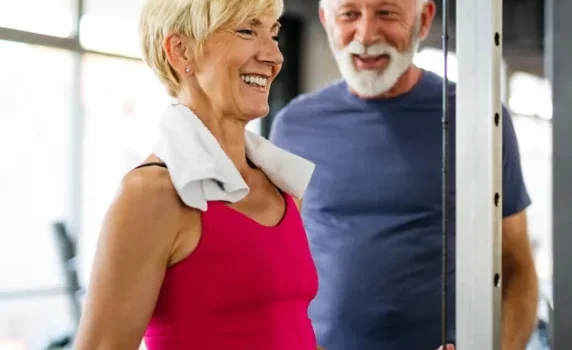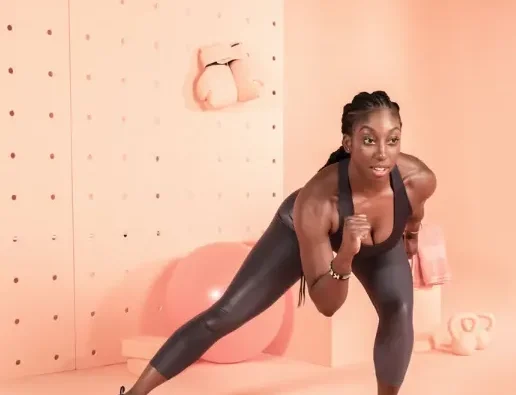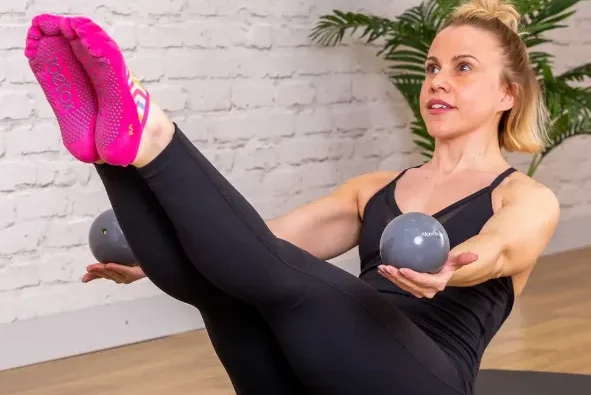
As we age, the goal of living an active and vibrant life—free from discomfort or limitations—becomes more important than ever. Functional fitness is a transformative approach to exercise that focuses on improving everyday movement, balance, and strength, making it especially beneficial for individuals over 40. Unlike traditional fitness programs that prioritize appearance, functional fitness targets real-life movements that enhance mobility, flexibility, and overall physical health. Whether you’re looking to prevent injury, maintain your independence, or simply age with confidence, this guide explains how functional fitness can be a game-changer for your well-being.
What is Functional Fitness and Why is it Important for Aging?
Functional fitness is all about training your body for daily activities—think of exercises that simulate movements like bending down to tie your shoes, lifting groceries, or navigating stairs. These exercises engage multiple muscle groups to help you move better, improve coordination, and build strength, all of which are vital for staying active and injury-free as you get older.
Aging naturally leads to changes such as muscle loss (sarcopenia), decreased bone density, and slower reflexes. Research from the National Institute on Aging indicates that adults lose 3-8% of their muscle mass per decade starting at age 30, with the rate increasing after 60. This can make simple tasks more challenging and increase the risk of falls. Functional fitness works against these changes by enhancing your physical strength and stability, ensuring that you remain independent and active for as long as possible.
Why is Functional Fitness Gaining Popularity?
As more people in their 40s and 50s seek to take control of their health and wellness, functional fitness has become a popular choice. With the rise of wearable fitness trackers and hybrid fitness programs that combine virtual and in-person training, it’s easier than ever to prioritize physical activity that improves your daily life. In 2025, functional fitness is not just a trend—it’s a necessity for maintaining mobility and quality of life as we age.
The Key Benefits of Functional Fitness for Aging Well
Functional fitness offers numerous advantages, especially as we get older. Here’s why it should be a part of your fitness routine:
- Improved Mobility and Independence
Exercises such as lunges and squats build strength in the muscles you use for everyday movements, helping you stay agile and independent. This leads to greater freedom to engage in activities you love, whether it’s traveling, playing with grandchildren, or enjoying hobbies. - Better Balance and Fall Prevention
Falls are a leading cause of injury among older adults. Functional fitness includes balance exercises, such as single-leg stands, to improve coordination and reduce the risk of falling. - Stronger Muscles and Bones
Weight-bearing exercises, like squats and resistance band workouts, help combat muscle and bone loss, reducing the risk of osteoporosis and maintaining joint health. - Enhanced Mental Health and Confidence
Mastering functional movements boosts self-esteem, while exercise stimulates the release of endorphins, improving mood and reducing stress—a key benefit for mental health as you age. - Customizable and Accessible
Functional fitness is adaptable for all fitness levels. Whether you’re new to exercise or a seasoned athlete, you can modify workouts to suit your needs, often without any special equipment.
5 Functional Fitness Exercises to Get Started
If you’re ready to incorporate functional fitness into your routine, here are five beginner-friendly exercises that can be done at home or anywhere. Always consult a doctor before starting any new exercise program, especially if you have existing health conditions.
- Bodyweight Squats
Why: Strengthens the legs and core, making it easier to sit, stand, and lift.
How: Stand with your feet shoulder-width apart, lower your hips like sitting in a chair, and return to standing. Perform 10-15 repetitions.
Tip: Use a chair for support if necessary. - Single-Leg Balance Holds
Why: Improves stability, reducing the risk of falls.
How: Stand on one leg, lifting the other slightly off the ground. Hold for 10-20 seconds, then switch legs.
Tip: Use a wall or stable surface for balance if needed. - Resistance Band Rows
Why: Strengthens the upper back and shoulders, helping with posture.
How: Attach a resistance band to a sturdy object, pull it toward your chest while squeezing your shoulder blades together. Perform 12-15 repetitions.
Tip: If you don’t have a resistance band, you can use a towel to mimic the movement. - Step-Ups
Why: Builds leg strength for tasks like climbing stairs or hills.
How: Step onto a sturdy stool or low step, alternating legs. Complete 10 reps per leg.
Tip: Keep movements slow and controlled to avoid straining your joints. - Plank Holds
Why: Strengthens the core, which is essential for balance and spine health.
How: Lie on your forearms and toes, keeping your body in a straight line. Hold for 15-30 seconds.
Tip: Drop to your knees if you need a modification.
How to Start Your Functional Fitness Journey
Getting started with functional fitness doesn’t require a gym membership or a lot of time. Here’s how to make it a sustainable part of your routine:
- Set Realistic Goals
Begin with small, achievable goals. For example, aim to exercise for 20 minutes, 2-3 times per week. Focus on improving specific tasks like carrying groceries or walking longer distances without fatigue. - Choose Your Preferred Format
- At Home: Use online videos or apps to guide your workouts. You can find plenty of free resources on platforms like YouTube.
- In-Person: Join a class at a local gym or community center that offers functional fitness for older adults.
- Hybrid: Many gyms provide virtual options that complement in-person workouts, offering flexibility.
- Progress Slowly
Start with simple bodyweight exercises and gradually incorporate light weights or resistance bands as you get stronger. Increase intensity over time, but avoid pushing yourself too hard to prevent injury. - Track Your Progress
Keep a journal or use a fitness tracker to monitor your improvements. Celebrate milestones, such as increasing the time you can hold a plank or adding more reps to your workouts. - Listen to Your Body
Take rest when necessary and modify exercises to fit your comfort level. If you experience pain, stop and reassess your technique or intensity.
Myths About Functional Fitness, Debunked
There are some misconceptions about functional fitness that might hold you back. Let’s clear them up:
- Myth: “It’s only for young people.”
Truth: Functional fitness is designed for all ages. Exercises can be adapted for beginners or anyone with limited mobility. - Myth: “You need a gym.”
Truth: Many functional exercises require no special equipment at all. You can use your body weight or household items like a sturdy chair or towel. - Myth: “It’s too intense.”
Truth: You control the intensity. Functional fitness is flexible and can be tailored to your own pace.
Why You Should Try Functional Fitness
In a world full of trendy workouts, functional fitness stands out because it’s designed for real-life applications. It’s not about achieving a specific aesthetic—it’s about making daily tasks easier, from gardening to traveling to keeping up with your family. As the aging population grows, staying active is more critical than ever. The best part? Advances in technology, such as AI-driven fitness apps and virtual classes, make functional fitness more accessible than ever before.
Your Path to Aging Strong
Functional fitness isn’t just an exercise routine—it’s a lifestyle choice that empowers you to live confidently at any age. Start with small, manageable goals, stay consistent, and watch how much easier everyday activities become. Whether you’re trying one exercise from the list above or joining a local class, functional fitness will help you move better and age gracefully.












